Animal Architecture Awards 2011 - The Winners
By Bustler Editors|
Monday, Aug 15, 2011

Related
The winning entries for the 2011 Animal Architecture Awards have just been announced. Now in its third year, the award contest "All Creatures Great & Small" invited critical and unpublished essays and projects to address how architecture can mediate and encourage multiple new ways of species learning and benefiting from each other - or as the organizers call it, to illustrate cospecies coshaping.
Animal Architecture believes that a greater understanding of biotic and ecological relationships can influence design, reshape our cities, and restructure our homes — benefiting the human and non-human animals that interact with and around them.
The panel of award jurors comprised Neeraj Bhatia, Wortham Fellow Rice University; Ned Dodington, Founder Animal Architecture; Allison Hunter, Visual Artist; Joyce Hwang, Assistant Processor University of Buffalo SUNY, Director Ants of the Prairie; Sanford Kwinter, Professor of Architectural Theory and Criticism, Harvard GSD; Jon LaRocca, Founder Animal Architecture; Geoff Manaugh, Author of BLDGBLOG; Cary Wolfe, Professor of English at Rice University and Series Editor Posthumanities.
Each project will be published in more detail on Animal Architecture within the coming weeks, and an upcoming exhibition is also in the works.
Here are the winning entries:
First Place: Theriomorphous Cyborg
Simone Ferracina

Inspired by Uexküll’s animal Umwelt, the “Theriomorphous Cyborg” is an immersive Augmented Reality game aimed at endowing participants with a non- and extra-human gaze. It is software designed to uncover alternative fields of experience and to activate novel relations between human cyborgs and their “sentient” surroundings.
Each level establishes a new and unfamiliar environment-world; LEVEL 1 endows players with the ability to perceive the Earth’s magnetic field. LEVEL 2 allows them to manipulate their own awareness of time by mixing synchronous and asynchronous signals. LEVEL 3 substitutes the participant’s eyesight with broadcasts from CCTV cameras activated by proximity.
First Runner Up: The Nottingham Apiary
Amelia Eiriksson, Fraser Godfrey, Ana Moldavsky, Esko Willman from the University of Nottingham

The Nottingham Apiary project addresses the problem of collapsing bee populations, upon which humans depend to pollinate food crops. This phenomenon, Colony Collapse Disorder, is attributed to many causes, however there is no conclusive evidence for any specific one. The project aims to restore bee populations locally, with the potential to be replicated in other locations around the world.
An existing derelict structure is used as framework for bee habitation, with hives gradually expanding and taking over. New elements, attached to the old, allow the process to happen. The folly creates a dialogue between the process, the surrounding area and the public, introducing the bees in a nonthreatening context. It acts as the entrance to the building. The visitor route follows The Plight of the Honey Bee installation, creating a gradual crescendo through the spaces.
Second Runner Up: Farmland World
Stewart Hicks and Allison Newmeyer of Design With Company, with Katharine Bayer and Hugh Swiatek

Farmland World is a chain of agro-tourist resorts sprinkled across the American Midwestern countryside. Part theme park and part working farm, guests arrive to the resort via train and stay as part of 1-day, 3-day or 5-day experience packages. Capitalizing on both recent investments in high-speed rail infrastructure and the plentiful subsidies for farming, the network of resorts combines crowd-sourced farm labor with eco-tainment. Guests perform daily chores as self-imposed distractions from the toil of their daily lives. Among the countless activities offered, guests can choose to ride the Animal Farmatures, the dual natured farm implements that complete traditional farm tasks while performing grand rural-techno spectacles. When its time to leave for home, guests climb back into the train, weary and satisfied from their labors as they marvel at the passing landscape they helped transform.
Third Runner Up: BirdScraper
Zhong Huang
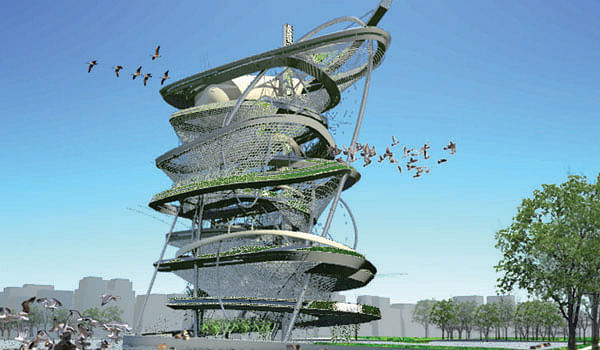
1. Birds Die From Crashing Into Skyscrapers Windows – Over 90,000 birds die every year by crashing into skyscrapers because lights inside the buildings attract birds flying right onto their windows.
2. NYC Is The Only Major US City Without A Wildlife Rehabilitation Center – 4,000 calls from people seeking help for distressed wildlife each year and emergency care and rehabilitation to over thousands of birds; most of them were injured from crashing into the dense “concrete jungle”, New York City.
The skyscraper contains a unique ecological system that produces oxygen and sustains itself. Since the building is located in the middle of the lake, all birds feces will drop down into the lake, thus feces will turn into algae. All algae have photosynthetic machinery ultimately derived from the Cyanobacteria, and so produce oxygen as a by-product of photosynthesis. This is the idea; more birds, they will drop more feces, and there are more algae. If there are more algae, they produce more oxygen.
See also the Honorable Mentions in the image gallery below. All images courtesy of Animal Architecture.
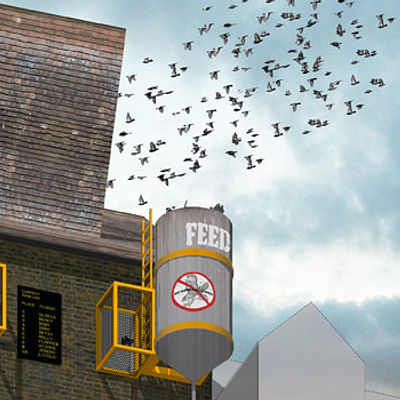


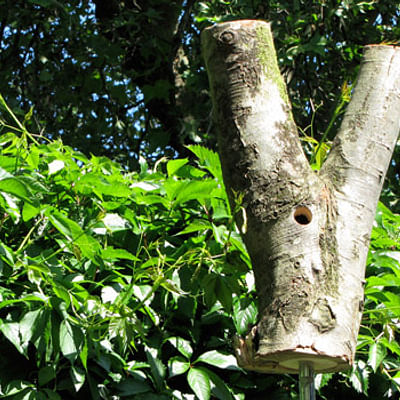

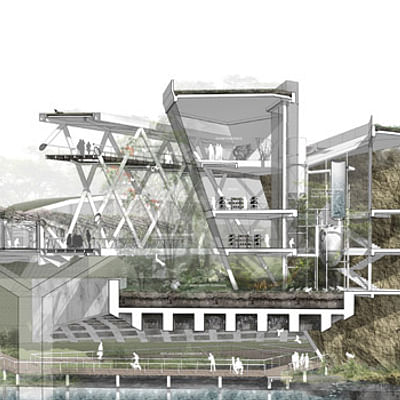
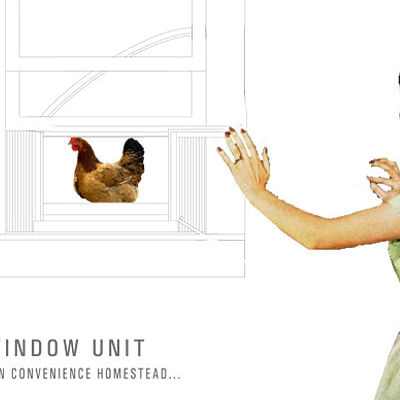

Share
0 Comments
Comment as :